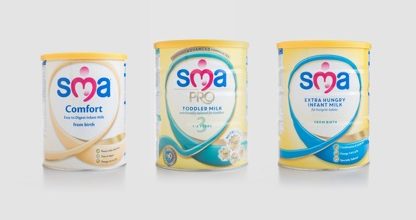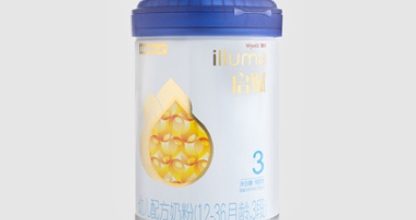Insights: Our work with infant formula
Tinmasters has been supplying leading brands in the infant formula market with packaging since 1978.
Supplying packaging to the food industry brings additional responsibilities to ensure the final product is safe (ie. doesn’t endanger human health) and that the composition and organoleptic characteristics are not altered. Infant formula is one of the most sensitive sectors within the food industry as the infants are highly vulnerable because (a) their bodies are developing and (b) they eat a lot of food in relation to their body weight.
At Tinmasters we work hard to ensure we are continuously improving and today, with over three decades of learning behind us, we believe we are market leaders when it comes to supplying packaging for infant formula. Our approach to our work centres on a 4 point plan to address:
- 1. Food contact
- 2. Food safety
- 3. Food fraud
- 4. Food defence
1. Food Contact
First, we ensure that our packaging products are safe to be used for the specific application (eg type of food and type of packaging) and for the specific processing and storage conditions. This is achieved through the following steps:
- Supply chain management
- Operational controls
- Formal process of risk evaluation / issuing Declarations Of Compliance (DoC)
- Product testing by external accredited laboratories
We begin by ensuring that the raw materials (metal substrate, coatings and inks) are safe to use in the specific application. This is done by obtaining technical information on the products and ultimately obtaining a Declaration of Compliance (DoC) from the suppliers. Where necessary, raw materials are independently tested by us and by suppliers and test certificates supplied.
Next we employ Good Manufacturing Practice and ensure we have appropriate operational controls in place for all of the many processes involved, including:
- Raw material storage (eg temperatures, use by dates)
- Product segregation (eg dedicated facilities and clean down procedures)
- Process control and compliance with technical data sheets (TDS)
- Effective equipment maintenance (eg oven curves, UV dryer testing)
- Effective quality control (eg film weight)
We then take all of the product application information, the supplier information, our process information and results from external laboratories into an iterative process that will result in us either deciding that a certain specification is safe for the specific product application (in which case we issue a DOC) or deciding that it is not safe and therefore rejecting it.
We are familiar with working to EU and EFSA standards, USA FDA standards and Chinese GB standards
2. Food safety
Next we ensure that our packaging does not result in the accidental contamination of the food in any of these three possible ways:
- Physical (eg if a piece of glass were to get into the food)
- Chemical (eg if a toxic chemical such as lead were to get into the food)
- Biological (eg if a pathogen such as salmonella were to get into the food)
This is achieved by employing a Food Safety Management System. The foundation of this is our Prerequisite Programme, which includes Good Manufacturing Practice and establishes the operating conditions underpinning a safe product.
Our prerequisites include:
- providing employees with workwear to ensure contamination is not transferred from their clothes to the product
- implementing a pest control process
- screening employees, contractors and visitors for illnesses
- restricting the wearing of jewellery in production areas
- forbidding anyone to eat or drink in production areas and enforcing hand washing
We then employ Hazard Analysis Critical Control Point (HACCP) to map our processes while identifying and controlling hazards.
All of our processes have been externally accredited by Lloyd’s Register LRQA to the ISO22000:2005 Food Safety Management System standard and internally benchmarked against both the British Retail Consortium/Institute of Packaging global standard (BRC/IoP) and ISO22000:4 (covering the prerequisites for food packaging and manufacturing).
We use only pre-qualified and approved suppliers and we conduct ongoing regular audits to ensure that their internal procedures and physical conditions are maintained.
3. Food fraud
Food fraud is defined as the intentional adulteration of a product for economic reasons. The fraud itself can take many forms, including counterfeiting, dilution, grey market production, mislabelling and substitution. Unfortunately food fraud is a frightening reality in certain markets, eg the 2008 melamine scandal in the Chinese infant formula market, which has seriously undermined consumer confidence to this day.
Metal packaging has the distinct advantage of being very difficult to tamper with. At Tinmasters we have significant experience in employing anti-counterfeit measures on our packaging and we are currently investing in the development of the next generation of techniques to fight food fraud.
We also undertake a vulnerability assessment on food related projects and put measures in place to address any weaknesses we identify. For example, we directly manage the destruction of all of our misprints to avoid any possibility of our authentic materials finding their way into a grey market.
4. Food defence
Lastly, during the course of our work we have had to consider food defence, which involves preventing the intentional adulteration of food for noneconomic reasons, eg bioterrorism.
We have used the TEAM approach (Threat, Evaluation, Assessment and Management) to help us evaluate and manage risks and then implemented any measures that we felt necessary. These measures have included employee vetting, contractor vetting, working with approved hauliers only, attaching tamper evident seals on trailers, installing CCTV and other site security initiatives.
Previous / All Insights / Next


